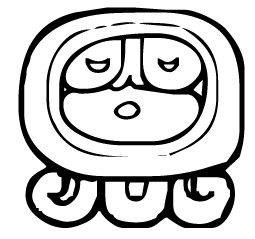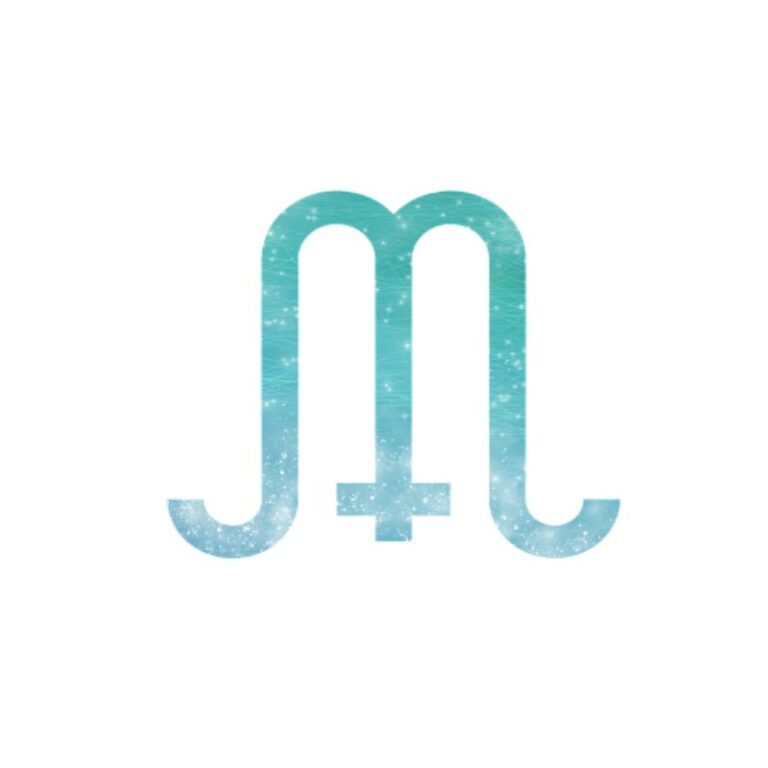Egyptian Symbols And Their Meanings
Egyptian symbols, like those of many other cultures, are often associated with religion and daily life.
Several examples are the Ankh, which symbolizes life, the Lotus flower, which embodies enlightenment, and the Ka and Ba, which represent spirit and soul, respectively.
In the course of their ancient history, the Egyptians have used symbols to represent a wide variety of thoughts and ideas from their mythology. This is a practice that has persisted throughout their society. These symbols also had a role in keeping their culture from generation to generation.
The symbols were inscribed on temple walls and obelisks and used in magical and religious ceremonies for both the living and the dead.
Many of these symbols were associated with the gods in ancient Egypt. They were used by the Egyptians to paint their temples, to depict their gods in inscriptions, and to create amulets to assist them in coping with the difficulties they faced during the period.
Egyptian symbology was also said to be a tool for a deeper understanding of their ancient culture. These images are unique in Egypt, a land where magic and humanity are inextricably linked.
Typically, these symbols resemble a particular object, but they possess certain characteristics connected to deities.
The symbols were passed down from previous civilizations, while others appeared at various stages during Egypt’s early history. Numerous symbols in Egyptian writing also have a hieroglyphic origin.
Egyptian Symbols And Their Meanings

Continue reading to learn about some of the most well-known ancient Egyptian symbols, as well as their history, meanings and significance.
1. Hedjet Symbol

The word “Hedjet” is an ancient Egyptian which means “White One.” It is the formal name for the White Crown worn by rulers of Upper Egypt. Its northern counterpart is the Deshret or Red Crown, worn by Lower Egyptian rulers.
The Hedjet or White Crown is a white elongated conical headpiece used to represent the king of Upper Egypt.
The Hedjet or White Crown symbol is depicted as an elongated design that resembles a stretched gourd. It was the crown of the rulers of Upper Egypt, as opposed to the Deshret which was the Red Crown that the rulers in Lower Egypt wore.
As the crown of kings, the Hedjet symbolizes the sovereignty and divine authority of the ruler. Since the Hedjet was never an actual hieroglyph, it was not used to express its meaning in writing.
There are numerous theories as to how the Hedjet actually looked like and what material it was made of, as well as the workmanship.
Due to lack of any physical fundings of Hedjet crowns, some historians believe that a Hedjet was made out of leather, but others say it was textile. However, most do think that the headdress was woven like a basket out of reed, therefore it was actually green.
The same lack of physical findings has also led historians to believe that the crown was passed from one regent to another, the way it’s done in present-day monarchies.
Today, the Hedjet or White Crown remains only in pictorial representations of ancient Egyptian royals and deities.
To learn more about this Hedjet Symbol , click here.
2. Sistrum Symbol

A sistrum is a percussion instrument, mainly associated with ancient Egypt. It is made up of a handle and a U-shaped brass or bronze frame.
This instrument was shaken during religious ceremonies and when coming into the presence of an ancient Egyptian deity. Tambourines are the sistrum’s its closest modern equivalent.
The name “sistrum” is derived from the Greek word “seistron” which literally means “that which is being shaken.”
The instrument was closely tied with ritual rites in Isis’ honor. This is evident in Egyptian art where the said goddess and her priestesses are frequently depicted holding a sistrum.
The oldest sistrum appeared in the Old Kingdom. It was known as naos-sistrum. This particular sistrum had cow horns and depictions of the goddess Hathor’s face on the handles. In some cases, though, falcons were featured on the top of the instrument.
As the sistrum was associated with the goddess Hathor, it also became connected with her powers. The sistrum thus came to symbolize joy, festivity, and erotism – traits attributed to Hathor. In later times, the sistrum became a symbol the Egyptians used to pacify the wrath of Hathor and any other enraged deity.
Today, the sistrum symbol is still present as a fundamental part of worship and religion in several regions of Africa. It remains a powerful symbol in Coptic and Ethiopian churches as well.
To learn more about this Sistrum Symbol, click here.
3. Was Scepter Symbol

The “was” is the Egyptian hieroglyph character symbolizing power and/or dominion. Thus, the ancient Egyptian symbol was scepter symbol, also known as tcham scepter, represented power and dominion.
The was scepter was used by pharaohs and priests as an emblem of authority.
The was scepter is a staff with the head of a desert animal at its top and an open fork at its base or “tail” which could be interpreted as the legs of this said animal.
In Egyptian hieroglyphics, the “was” was a character that represented power or dominion.
In Egyptian mythology, the was scepter was used by ancient Egyptian deities as emblems of their power and dominion. Hence, pharaohs and priests used this staff to symbolize their authority.
The symbol was used to create a link between the material world and the netherworld. It was also believed that four was scepters served as pillar that supported the sky.
The was scepter was as well employed by the ancient Egyptians as an amulet, believing the symbol possessed magical powers
To learn more about this Was Scepter Symbol, click here.
4. Uraeus Symbol

The word “uraeus” derives from the Greek “οὐραῖος” or “ouraîos,” which means “on its tail” and from the Egyptian “iaret,” meaning ” rearing cobra.” Its plural form is “uraei” or “uraeuses.”
The uraeus is the stylized and upright figure of an Egyptian cobra, a symbol for the Egyptian serpent goddess Wadjet who was the patroness and protectress of Egypt.
It was used as a representation of deity, sovereignty, divine authority, and royalty in ancient Egypt. This is why this symbol is often seen on the royal crowns and the forehead of a pharaoh’s sarcophagus.
The uraeus is a symbol for the Egyptian serpent goddess Wadjet, an ancient goddess associated with royalty. A number of other Egyptian goddesses associated with her are also depicted as wearing the uraeus.
The uraeus symbol is the image of the rearing cobra on the pharaoh’s crown, which distinguished him from everyone else. Pharaohs were recognized through this symbol because only they could wear the uraeus.
The uraeus symbol is also seen on the forehead of the pharaohs’ sarcophagi, as well as on crowns and statues of queens. The pharaoh’s uraeus was coiled while the queen’s was uncoiled.
The uraeus is often seen as a cobra, or at least the head of a cobra. It was attached on the crown of the queens and pharaohs, rearing from the forehead, to represent the goddess Wadjet who was believed to be the personal protector of the pharaoh and, in turn, the whole country.
From being a local goddess of a predynastic city of Dep to the goddess of Lower Egypt to the protectress of the whole of Egypt, Wadjet became one of the symbols of Egypt represented by the uraeus. This also made the uraeus the symbol of rulership.
To learn more about this Uraeus Symbol, click here.
5. Cartouche Symbol
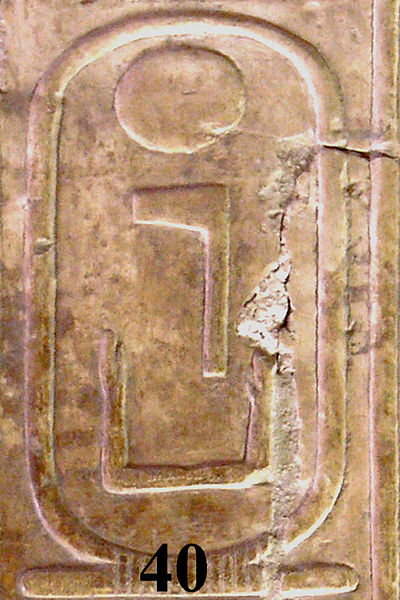
The cartouche symbol is represented as an oval placed vertically, with a horizontal bar at one end. Cartouches could also be horizontal, depending on the length of a royal name written inside it.
This oval-shaped symbol bears hieroglyphs in the center and a line underneath. The circle around the hieroglyph stands to for a magical rope and the bar beneath signifies the place where the rope is tied together. The rope circle symbolizes everything being bound by the sun which represented the king’s power over the universe.
Cartouches were solar symbols, denoting the powers of the sun, with its oval form said to symbolize the shape of the sun.
Cartouche was also seen as possessing the ability to protect the kings or pharaohs from the world’s evils. The oval shape encompassing the hieroglyphic inscription became a symbol of protection for the pharaohs. However, they later came to symbolize both good luck and protection, not just for the royals but the masses as well.
To learn more about this Cartouche Symbol, click here.
6. Ouroboros Symbol
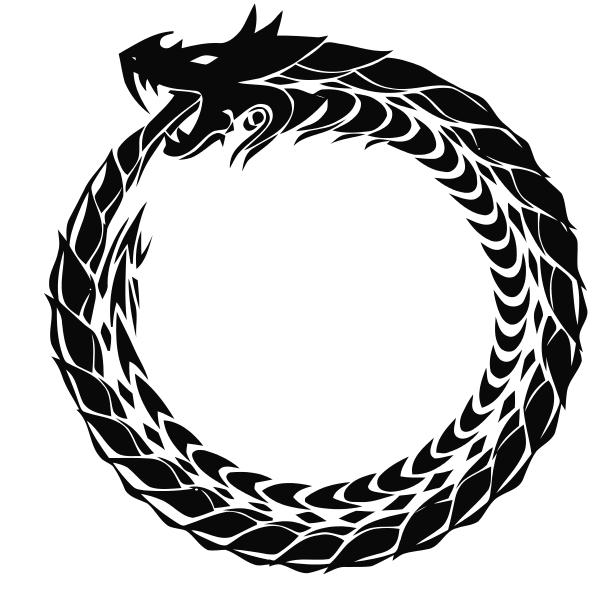
The ouroboros, an ancient symbol of a serpent eating its own tail, is seen as a symbol for eternal cyclic renewal – the cycle of life, death, and rebirth. It is associated with the Norse Jörmungandr.
The term “ouroboros” means “tail-devourer.” It is derived from Ancient Greek “oura” meaning “tail” and “-boros” meaning “-eating.”
Ouroborus cataphractus, a genus of the armadillo girdled lizard, is named after the ouroboros because it curls into a ball, holding its own tail in its mouth, in a defensive posture.
The ouroboros, also spelled “uroboros,” is a symbol of ancient Egypt and Greece depicting a serpent – or sometimes a dragon – with its tail in its mouth, eating itself and then being reborn from itself.
The ouroboros, an ancient emblematic serpent depicted with its tail in its mouth, devouring itself, represented infinity and the cycle of birth, death, and rebirth.
In some cultures, the skin-sloughing process of snakes symbolizes the transmigration of souls, while the serpent biting its own tail represents fertility – with the mouth signifying the womb and the tail seen as a phallic symbol.
In Norse mythology, the ouroboros appears as the sea serpent Jörmungandr, one of Loki’s children.
Indigenous people in South America believe that waters at the edge of the world-disc are encompassed by a giant snake, often an anaconda, with its tail in its mouth, biting itself.
To learn more about this Ouroboros Symbol , click here.
7. Wedjat Symbol
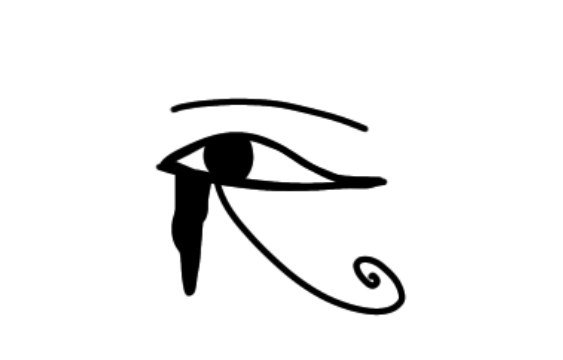
The ancient Egyptian name “wedjat” or “udjat” means “the one that is sound.” It translates to “whole,” “completed,” or “uninjured” eye, so it is not clear whether it refers to the eye of Horus that was destroyed and restored or the unharmed one.
The wedjat symbol represents healing power, well-being, protection, and rebirth. It is depicted as a stylized eye with distinctive markings and was believed to possess protective magical powers.
The wedjat or Eye of Horus was one of the most popular amulets in ancient Egypt. It was a symbol of the healed eye of the sky god Horus.
Horus is often depicted as a falcon-headed man, thus, the wedjat eye features a combination of both human and falcon elements.
It appears as a human eye with a horizontal cosmetic line that extends from its outer corner and mixes it with the stylized markings of a falcon’s face, which are reflected in the vertical extension below the pupil and in the diagonal line with a curled or spiral tail.
The wedjat eye or Eye of Horus symbolyzes healing, well-being, and protection, as well as rebirth. However, it also came to denote other concepts.
A prominent example of this is the moon because of its waxing and waning that was likened to the injury and restoration of Horus’ eye.
An amulet in the wedjat’s shape was believed to protect its wearers and to give them the power of recovery and regeneration. This was popularly worn back in the day, not only by the living but the dead as well.
To learn more about this Wedjat Symbol, click here.
8. Amenta Symbol

“Amenta” denotes the world of the dead mentioned in Egyptian literature as the “Desert of Amenta.”
It is believed to be a mythical place, situated near the west sandbank of the river Nile. This was where the Egyptians traditionally buried their dead because the sun sets in the west.
Amenta, the symbol of the underworld, is depicted as the horizon where the sun sets.
The amenta symbol was also used as a representation of the west sandbank of the river Nile, which was where the Egyptians traditionally buried their dead. Hence, amenta became the symbol for the land of the dead.
The symbol signifies the world that lies beneath the earthly one. It is a symbol that represents a burial place or the land of the dead, as well as a place from where begins the journey to the afterlife.
To learn more about this Amenta Symbol, click here.
9. Seba Symbol
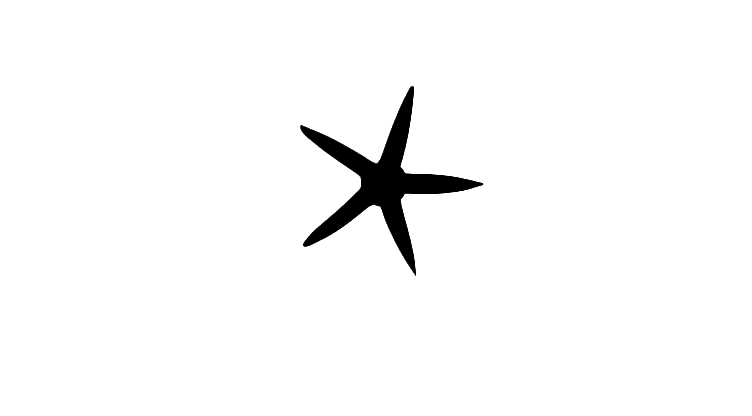
Patterned after a starfish, with five spokes separated by an equal distance, the seba was a representation of the constellations, or star-gods.
A variation of the seba with a round enclosure symbolized the Duat, or the underworld where the sun diappeared every night, and to which the souls of the dead came up after death.
The word “seba” means “learning” or “discipline” and is associated with doorways and gates.
Seba is a symbol for a lot of things. It represents the Duat or the realm of the dead and the afterlife itself. It also symbolizes time and religion, as well as the constellations and the star-gods.
Seba as a symbol is linked with the ideas of guidance, discipline, traveling, learning, and new beginnings.
Depicted as a five-pointed line that looks like a starfish, the seba symbol represented the stars. Early examples of this symbol has rounder ends with two concentric rings marking the middle.
The seba symbol is linked with concepts of learning and discipline. It also signifies gates and doorways.
In Egyptian art, seba is used to symbolize the stars which the Egyptians believed dwelled in the Duat and that they came down there every night to accompany the sun. The symbol of a star within a circle was the Egyptian way of representing the afterlife.
To learn more about this Seba Symbol, click here.
10. Scarab Symbol
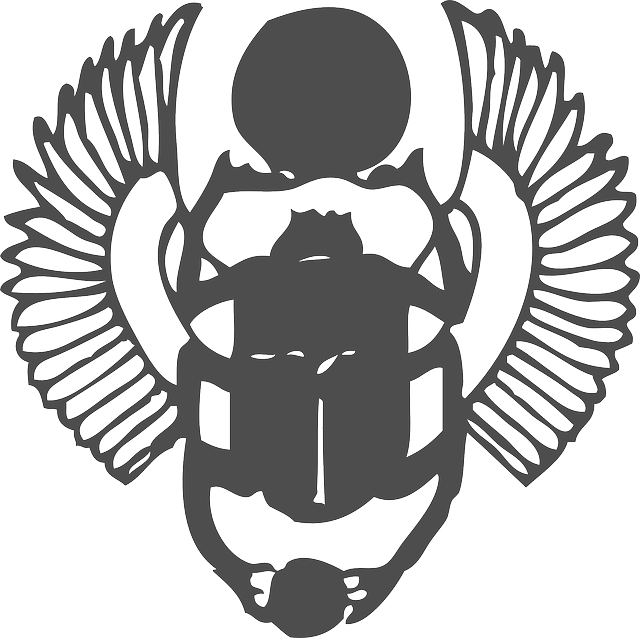
Scarabaeus sacer or scarab, also known as kheper beetle, is a large dung beetle native to the eastern Mediterranean area. Regarded as sacred, it was a very important symbol in ancient Egypt.
The scarab beetle lays its eggs in dung balls formed through rolling. The scarab’s life revolves around these dung balls. Scarabs consume them, lay their eggs in them, and feed their young with them – thus representing a cycle of rebirth.
When the eggs hatch, the scarab beetle seems to materialize from nowhere. Based on this observation made by ancient Egyptians, the scarab became a symbol of spontaneous generation, resurrection, and transformation.
Scarab beetles were considered a lucky symbol by ancient Egyptians. A very significant symbol because it represented the sun god Ra, scarabs were popularly used as amulets in ancient Egypt.
Ancient Egyptians also revered these insects for symbolizing the circle of life and death, as well as embodying the concept of existence, growth, and development.
The scarab as a symbol is sometimes depicted with spread wings and inscripted with hieroglyphs on the flat underside.
The scarab is said to represent the sun god Ra and the divine manifestation of the early morning sun (the scarab-headed god Khepri). It also symbolizes existence, manifestation, effectiveness, and growth or development, as well as the cycle of birth, spontaneous generation, resurrection, and transformation.
The scarab symbol, when worn as an amulet, is also believed to protect the wearer from evil and provide confidence in the knowledge of resurrection.
To learn more about this Scarab Symbol, click here.
11. Menat Symbol
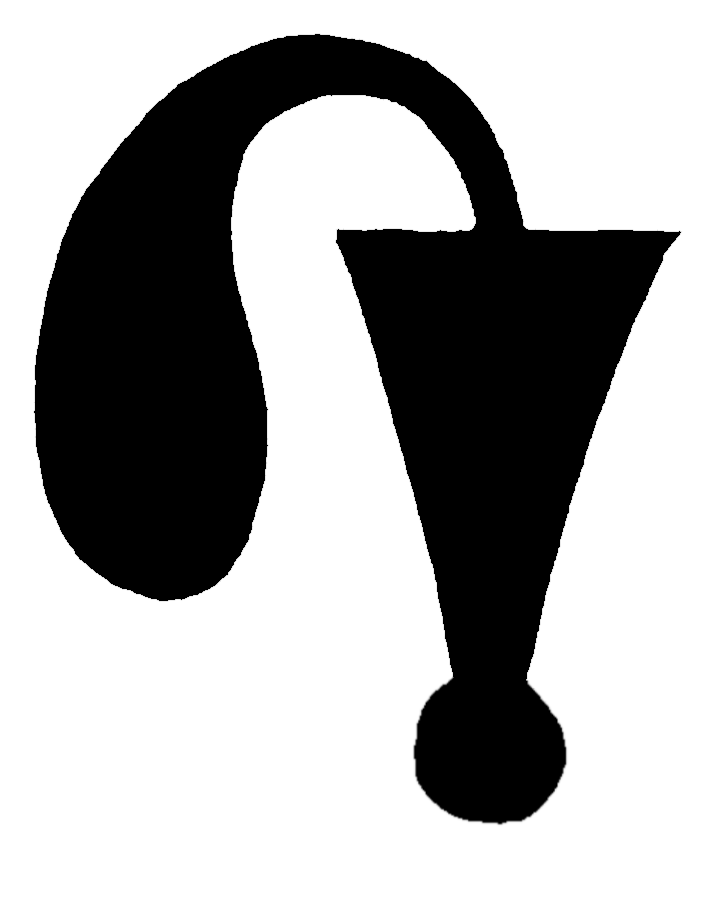
The menat, also known as menit and menyat, is a symbol consisting of a beaded necklace and a counterpoise. An emblem of the sky goddess Hathor, it was used in ancient Egyptian religion as a symbol of divine protection.
A menat is a talisman or an amulet that can be described as an ornament or religious object believed to bestow good luck or protection against evil, danger, and diseases. It is typically carved or inscribed with magic signs, symbols, formula, or sacred text.
The menat’s counterweight was deemed magical and symbolized the life-force. Used as amulets, the menat was believed to attract prosperity and good fortune.
The menat necklace was worn by ancient Egyptians, both men and women, to promote health and vitality. Among women it was believed to bestow fruitfulness and health. For men, it represented virility.
The necklace was also believed to provide good luck and fortune; ward off danger, sickness, and evil spirits; and serve as a protection in the afterlife.
To learn more about this Menat Symbol, click here.
12. Tyet Symbol
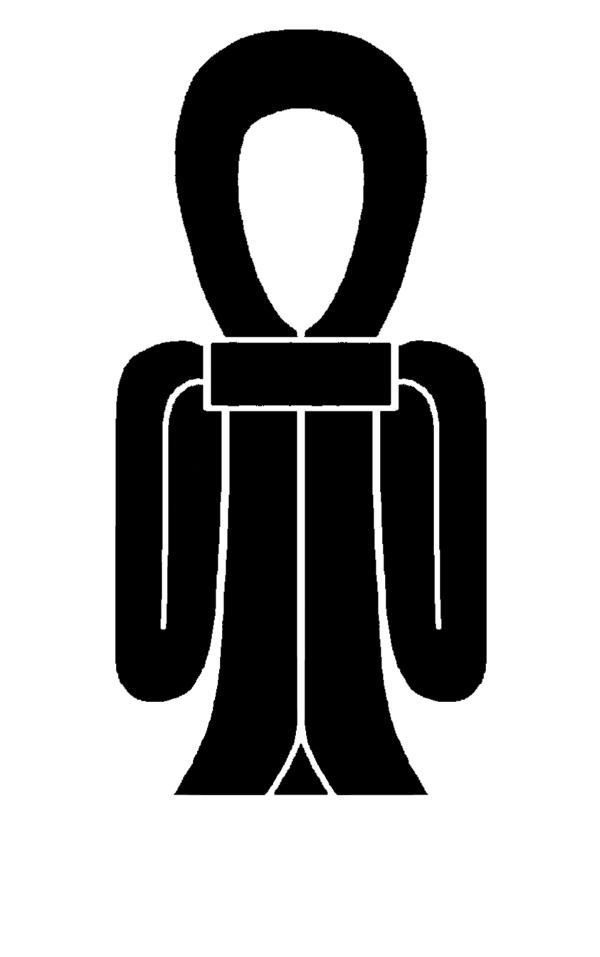
Tyet is also called by many other names. For the Egyptians, it is “tit” and sometimes spelled as “tiet” and “thet.”
This ancient symbol closely resembles the ankh, with the exception of the transverse arms curved downward. Even the tyet’s hieroglyphic sign, which is often translated as “life” or “welfare,” is similar to what the ankh represents.
The symbol is linked with Isis, which may be due to its frequent association with the djed pillar. This association with Isis leads to its other names: “the knot of Isis,” “the girdle of Isis,” and “the blood of Isis.”
The tyet symbol also resembles the knot which secures the garments of the gods in a lot of depictions, hence, the name “Isis knot” or the “knot of Isis.”
The red color that the tyet is usually seen in suggests a link with Isis’ blood.
The tyet or Isis knot is akin to both the shape and usage of the ankh sign – “the key of life” – and is also often found alongside with the djed pillar and the was sceptre.
Just like its origin, the tyet’s interpretation is uncertain. Some have associated the symbol to menstruation and interpreted it as a depiction of the female reproductive organ – specifically, the uterus and the vagina.
Some assume that the tyet’s original purpose was as a means of protection. According to Egytpian mythology, the sun god – Atum-Re – knotted the tyet.
He placed it in the pregnant Isis’ womb in order to keep Seth, the god of disorder, from causing miscarriage or harming the unborn child.
Pregnant women used the tyet amulets added with magic spells to prevent bleeding and/or miscarriages. This was supported by the position where these amulets were found during excavations – tucked between the legs of women with unborn children.
To learn more about this Tyet Symbol, click here.
13. Djed Symbol
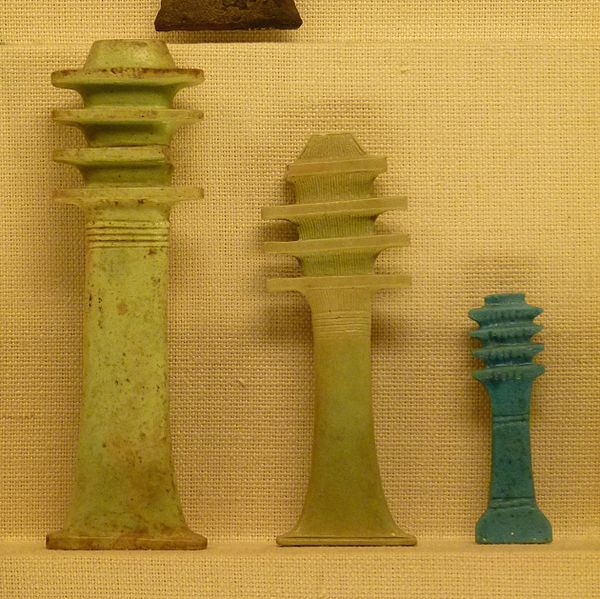
The djed is symbol that appears as a vertical shaft or a pillar topped with four horizontal bars that bear a series of lines between them. The neck part of a djed has four bands around it, just below the first horizontal bar.
This Egyptian symbol can be seen in hieroglyphics, architecture, artwork, tattoos, and jewelry.
A very significant and well respected symbol among Egyptians, the djed’s meaning is universal.
The horizontal bars at the top denote stability, just below them is the part that signifies prosperity, lower still is the part that symbolizes king’s rule, fertility follows, and the backbone of Osiris at the bottom.
This pillar, as a whole, symbolizes the concept, the spoken, and the written word of stability.
In hieroglyphs, the djed symbol is often found together with the tyet, also known as the knot of Isis or the girdle of Isis.
The “backbone” of something means the most vital part of it that provides support for everything else.
In other words, having a backbone means providing stability, permanence, and immutabilitiy – things the ancient Egyptian symbol djed signifies.
A pillar-like figure in Egyptian hieroglyphs symbolizing stability, permanence, and immutability, the djed is one of the more ancient and common symbols in ancient Egyptian religion.
Seen as the symbolic backbone of the god Osiris, it is also associated with the falcon god Seker and the creator-god Ptah.
To learn more about this Djed Symbol, click here.
14. Ankh Symbol

The ankh is a T-shape Egyptian hieroglyph that bears a loop on top. In Latin, it is known as a crux ansata, which translates as an ansate – or handle-shaped – cross.
In Egyptian culture, the dead carry this symbol as a sign that they seek immortality from the gods, thus, ankhs were placed in sarcophagi to ensure life after death.
The ankh symbol generally represents life and rebirth.
The ankh is used to symbolize the Goth subculture as well as a represesentative of the African cultural identity and Neopagan belief systems.
This teardrop-shaped loop cross is a sacred symbol for Egyptians. The ankh was among the most popular decorative motifs in ancient times, not only in Egypt but its neighbors as well. Back then, it symbolized the spring where the elixir of immortality and divine virtues flowed.
Sometimes referred to as “the key of life” or “the key of the Nile,” the ankh symbol represents eternal life in Ancient Egypt and is widely used as an amulet for protection.
This symbol may also represent the elements that are meant to provide and preserve life such as water, air, and the sun.

